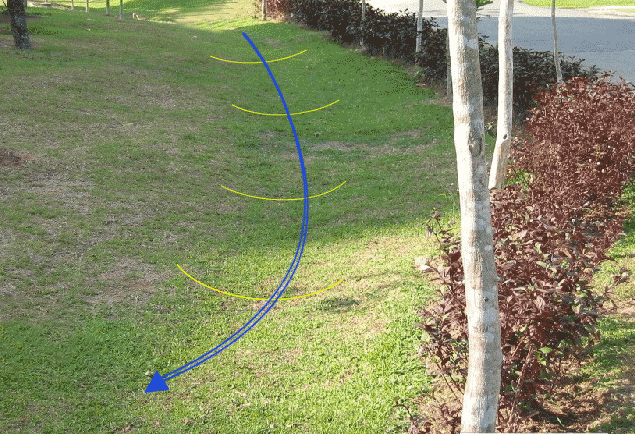FrenchDrainsTulsa
AFFORDABLE DRAINAGE & WATERPROOFING SOLUTIONS


TULSA'S #1 DRAINAGE SOLUTION CONTRACTOR


SERVICES WE PROVIDE
FRENCH
DRAINS
FRENCH DRAIN INSTALLATION
French drain systems are used to help drain ground and surface water away from an area, usually the foundation of a house, crawl space or basement, or any other important structure. A French drain is also useful as a backup for retaining walls, and for draining water away. French drains work by employing the principle of gravity. French drain installation involves systems being installed in a slightly sloping manner, directing water away from the problem area to another area. We usually direct water to the street through a curb, to daylight or a dry well. We use solid perforated pvc pipe in our french drain systems to prevent dirt or plant roots from clogging the drain system. Corrugated pipe systems will allow root intrusion, clog over time and will not maintain proper pitch in expansive clay soils. Our French drain systems are wrapped in fabric filter prior to gravel backfill and then a top coat of soil and sod provides a clean look for years to come.
BENEFITS OF FRENCH DRAIN SYSTEMS
In addition to mitigating the damaging effects of standing water around the structure of a home, or commercial building, french drains can be beneficial for water conservation efforts. Master Lift can advise homeowners on ways to efficiently use the water resources on their property. For example, a rain garden is an invention that uses wetland plants to absorb excess water and return it to the atmosphere through the process of transpiration. Incorporating a technique such as this helps to mitigate the damaging effects of water around the structure. This is in fact one of the easiest ways to address minor issues. Understanding the importance of French drain systems and how they work is essential in maintaining dry crawlspace areas and protecting you property from seasonal structural movement or failure.
PROPER
GRADING
GRADING SOLUTIONS
What is grading? Simply put, it is moving dirt from one place to another to achieve a desired slope. This can involve adding dirt to a low spot or removing dirt from a high spot, but it usually involves both. Grading is typically performed with heavy machinery. There are several different grading techniques that are referred to by various names. Below is a glossary of grading techniques with the names used by our moisture control specialists.
-
Berm: A narrow, raised mound that provides a barrier to prevent water from flowing to a particular area.
-
Swell: A long, narrow, gently sloping depression that provides a channel for water to flow to a particular area. A swell is often used to encourage water to run where it is already naturally attempting to run.
-
Ditch: A long, deep depression with a capacity to carry large volumes of water.
-
Positive Slope: By code, there should be a 5% slope away from the foundation of your structure. In other words, the ground that touches your structure should be 3" higher than the ground that is 5 feet away from your home or commercial structure. When you have neutral slope or, worse yet, negative slope, then you will have water sitting beside your foundation and potentially compromising your foundation, contributing to excessive structural movement or failure.




BASEMENT
WATERPROOFING
REPAIRING BASEMENT LEAKS
An unresolved basement leak and other water issues can cause significant harm to the structure of your home. The consistent presence of water in a wet basement can encourage the growth of mold and mildew, which can significantly harm your home's indoor air quality. In addition, damp basements attract insects and rodents as they search for water sources for their survival. There are two common options available to solve wet basement problems:
-
Interior Solutions: Interior work on a wet basement utilizes a drainage system inside the perimeter of your basement to control the water that is entering, directing it to a sump pump. This method should never be called waterproofing, but rather water control. Water control systems allow the water in, redirect it to a catch basin and then pump it back out to daylight or discharged through the curb.
-
Exterior Solutions: Basement waterproofing is accomplished by exterior excavation to the bottom of the foundations footing, installation of proper drainage, and treatment of the walls to prevent water from entering. The majority of basement waterproofing and water control solutions are being performed by system companies. System companies may claim to offer different methods, but will always steer you towards their method. This one-size-fits-all approach to basement waterproofing benefits the waterproofing company more often than the customer. Typically there are two or three options that will work, so make sure you are provide logical options when choosing the right repair contractor.


GUTTER EXTENSIONS
INSTALLATION OF GUTTER EXTENSIONS
A prime suspect for yard drainage issues are the downspouts around your structure. Downspouts are commonly installed on homes, however they are rarely set up properly to ensure excess water is moved far enough away from the foundation of the home. If the downspout is draining water directly at the base of the home, this can lead to your lawn or landscaping literally being eroded away. If the water draining from the roof isn't directed away from the home, it will quickly find its way down and around the foundation and can flood the surrounding area in your yard. Adapters, also known as gutter or downspout extensions, can be attached to the end of the downspout, then connected to a solid drainage pipe which leads the water away from the home. In order to guarantee proper drainage throughout your entire yard, a complete underground drain system tailored to your specific yard's needs is highly recommended. Collectively, the system would divert all excess water downhill where it can be released without causing damage to your home or landscape.

We are only a phone call away